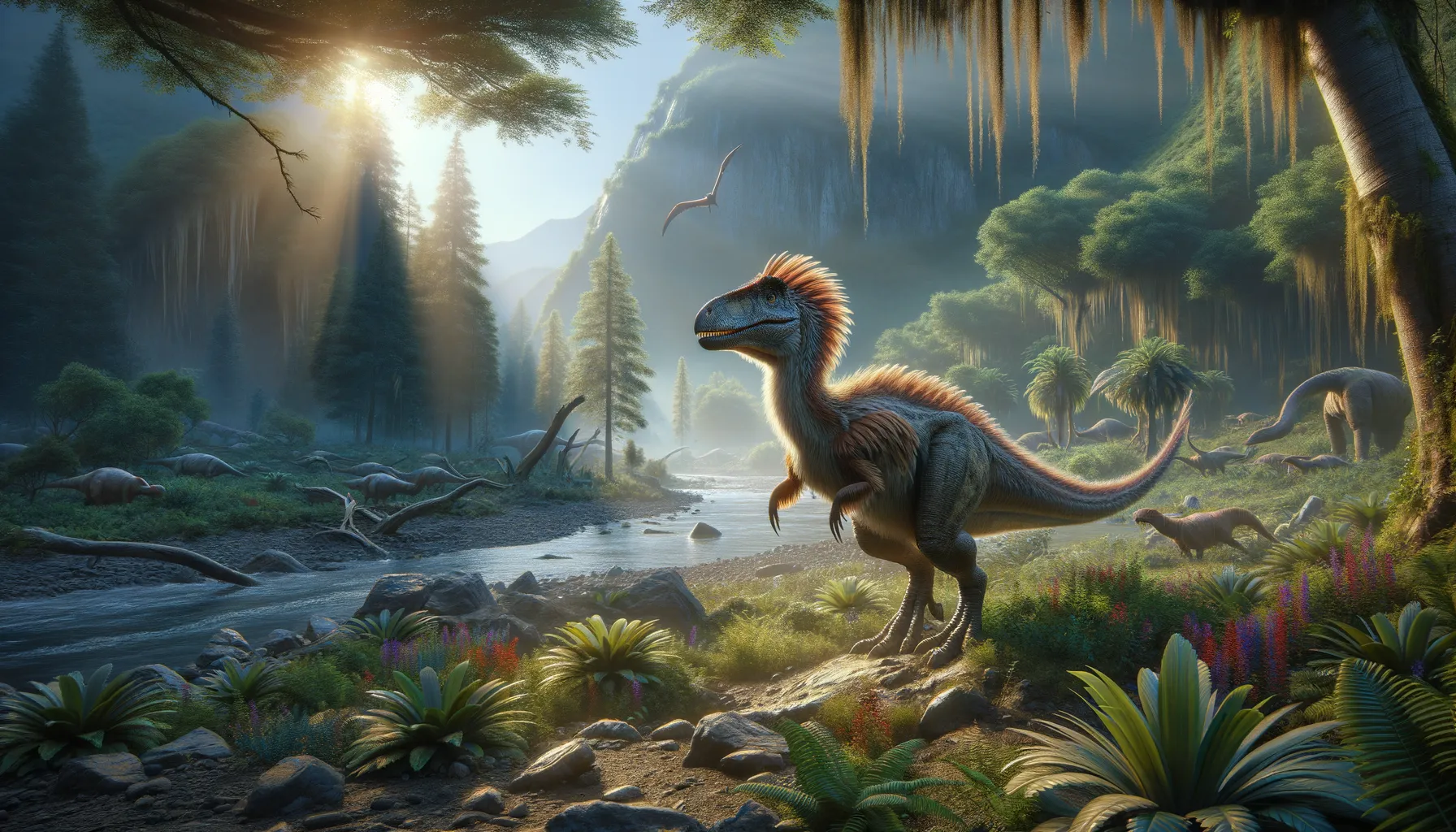
Sinusonasus
Nature's small, feathered enigma.
Period
Cretaceous
Length
Roughly 1.2 meters long.
Height
Around 0.5 meters tall.
Weight
Approximately 5 to 6 kilograms.
Sinusonasus was a small, feathered theropod dinosaur from the early Cretaceous period. It is notable for its distinctive nasal structure and bird-like features, hinting at its evolutionary path. Fossil evidence suggests it lived in what is now China, adapting to a diverse environment. As a member of the troodontid family, it showcased characteristics that are crucial in understanding the evolutionary link between dinosaurs and birds.
Diet
Sinusonasus primarily consumed small animals, insects, and possibly plants. Its diet indicates that it was an opportunistic feeder suited to its varied environment.
Hunting
It hunted using its keen senses and agility, allowing it to capture small prey effectively. Its sharp claws provided an advantage in hunting and scavenging.
Environmental challenges
Living in a dynamic and changing environment, Sinusonasus faced predators and competition for food. Adaptations like feathers may have helped it stay warm in cooler climates. Vegetation changes could have influenced its diet, pushing it towards versatility. Geological changes in its habitat might have impacted its mobility and shelter-seeking behaviors.
Speed
Moderate, ideal for short bursts.
Lifespan
Estimated around 20 to 30 years.
First discovery
Uncovered in the Yixian Formation, China, in 2003.
Fun Facts
- Sinusonasus was a small dinosaur that lived during the Early Cretaceous period, about 125 million years ago.
- This dinosaur's name, Sinusonasus, means 'curved snout', which refers to the unique shape of its nose.
- Sinusonasus belonged to the troodontid family, known for their bird-like features and keen senses.
- It likely had a feathered body, hinting at the evolutionary link between dinosaurs and modern birds.
- Sinusonasus was discovered in the famous fossil-rich Liaoning Province in China.
- Despite its small size, it is thought to have been a swift and agile hunter.
- Sinusonasus had large eyes, suggesting it may have been adapted for night hunting or seeing in low light conditions.
Growth and Development
Like many theropods, Sinusonasus likely went through rapid growth spurts in its juvenile stages. Its development involved growing feathers, necessary for temperature regulation and, potentially, social displays. Juveniles might have stayed with adults for protection during early growth phases. As it grew, its body developed strong yet lightweight bones suited for its active lifestyle.
Habitat
The Yixian Formation's forested regions, where Sinusonasus resided, enabled a diverse ecosystem with abundant resources. Its habitat included lakes and rivers, supporting varied plant and animal life. The area's seasonal changes provided both challenges and opportunities for survival. Shelter from larger predators would have been sought among dense underbrush or along rocky terrains.
Interaction with other species
Sinusonasus coexisted with other small theropods, herbivorous dinosaurs, and early mammals. Its presence in a diverse ecosystem suggests potential competition for resources. Symbiotic relationships might have existed with insects it helped control through its diet. Its adaptable diet would have enabled it to thrive alongside other species with minimal conflict.
Natural lifespan
In the wild, it lived about 25 years.
Reproduction
Sinusonasus likely laid eggs, with nesting behavior similar to modern birds. Clutch sizes were probably small, ensuring that parental care could increase offspring survival rates. Fossil evidence suggests communal nesting grounds or solitary nests in hidden locations. Hatchlings may have been precocial, capable of some level of independence shortly after birth.
Social behaviour
Sinusonasus could have exhibited social behavior, potentially living in small groups or flocks. Group living provided mutual benefits like increased protection from predators. Social interactions might have included displays involving feathers for mating or status. Territorial behavior could have been limited due to the extensive availability of resources.
Fossil locations
Fossils of Sinusonasus have primarily been located in the Yixian Formation in China. These findings have provided substantial insights into early Cretaceous ecosystems. The well-preserved nature of the fossils has allowed detailed reconstructions of its appearance and lifestyle. Southern Liaoning Province, where many fossils are found, remains a key area for uncovering troodontid history.
